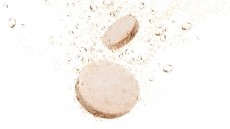Aluminium drink cans: Fifty years on and still going strong?
Coors, which claims to have been the first brewery to adapt aluminium instead of tin as a primary material in its cans in 1959, said that aluminium packaging continues to evolve to meet a variety of consumer demands for providing beer.
However, US marketing consultancy the Speidell Group suggests that although the humble beverage can still has room for significant innovation in the future, ensuring consumer interest will be a key factor for further growth.
Bill Speidell, president for the consultancy group, suggests that, while developments like nanotechnology can open up new developments in green and functional beverage cans, consumer acceptance must not be underestimated.
“Everything is consumer driven, this makes selling emerging technologies complex and difficult, whether for the can industry, plastics or innovative materials,” he stated.
Changing needs
Speidell told BeverageDaily.com that the longevity of the aluminium can’s use within the beverage market was down to the minimal need over the last half century to seek alternatives.
“It meets all needs consumers look for,” he stated. “It is tamper proof and protects the product by providing shelf life and blocking light; there hasn’t been a need for it to change.”
As pressure grows on beverage manufacturers and packers to provide cost efficient, greener products, Speidell suggested that the can may not remain competitive in its current form, requiring further development.
He was confident though that there was plenty of room for innovation through developments like nanotechnology to ensure further improvements to cost and functionality for the metal beverage can.
“There is more than the necessary ability to keep [beverage cans] competitive on the shelf right now,” said Speidell. “It’s just a matter of getting consumers to accept some of these changes.”
In such a cost driven market, to protect long-term market share for beverage cans over emerging technologies and products, the Speidell group suggested that some ground may initially need to be lost to push ahead with innovation.
“Developments of other materials will create a much more competitive environment, though I do think the product will survive,” Speidell added.
“I don’t think this will happen without a lot of effort from the canned beverage industry though.”
Some manufacturers believe that this effort is already being seen though.
Drink maker development
Molson Coors said that its engineers had initially switched from using tin to aluminium back in 1959 due to concerns that taste was negatively impacted.
The brewer claims that the beverage can, certainly within its own operations, has since had a long history of development despite seemingly undergoing limited visual change.
Although well established as a pack for both alcoholic beverages and soft drinks, Molson Coors suggested that it had pushed ahead with a number of innovations to metal packaging in recent years.
According to the company, these initiatives have included a seven per cent reduction in material use for its US beverage cans over the last five years and development of a vented wide mouth.
Greg Wade, chief supply chain officer for Molson Coors, told BeverageDaily.com that in their current forms, beverage cans remain a cost effective package that can also be indefinitely recycled, a fact increasingly noticed worldwide.
“In Canada, the main medium for beer delivery is glass and in the UK, it is through kegs,” he stated. “In [these] geographies, trends are moving toward cans, aluminium in Canada and steel in the UK.”











